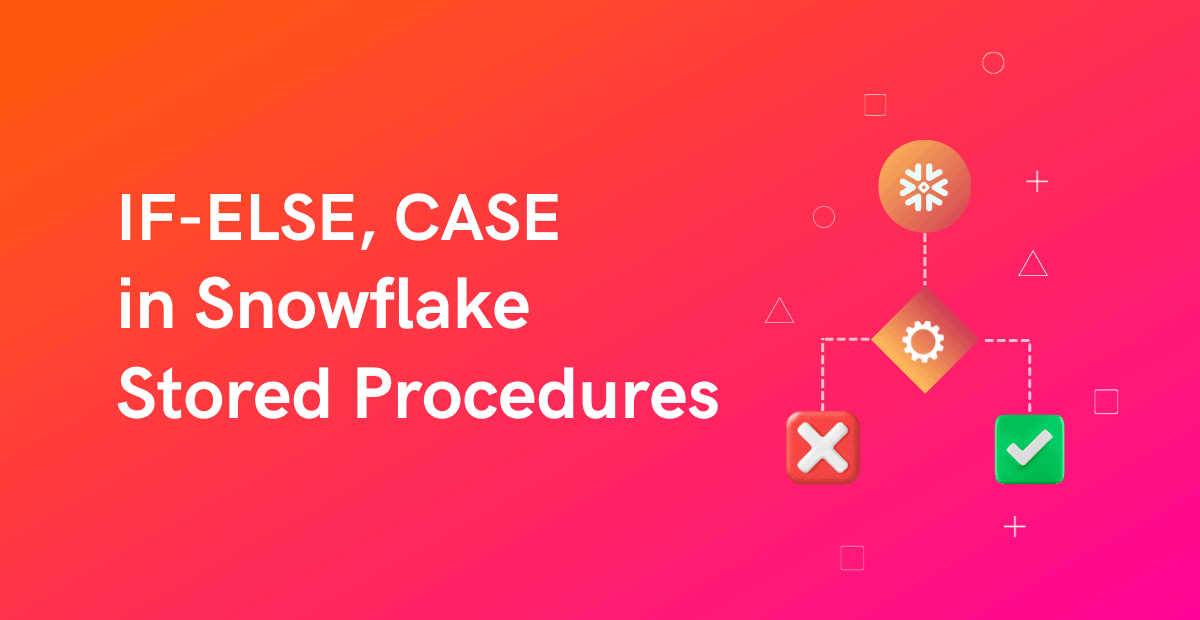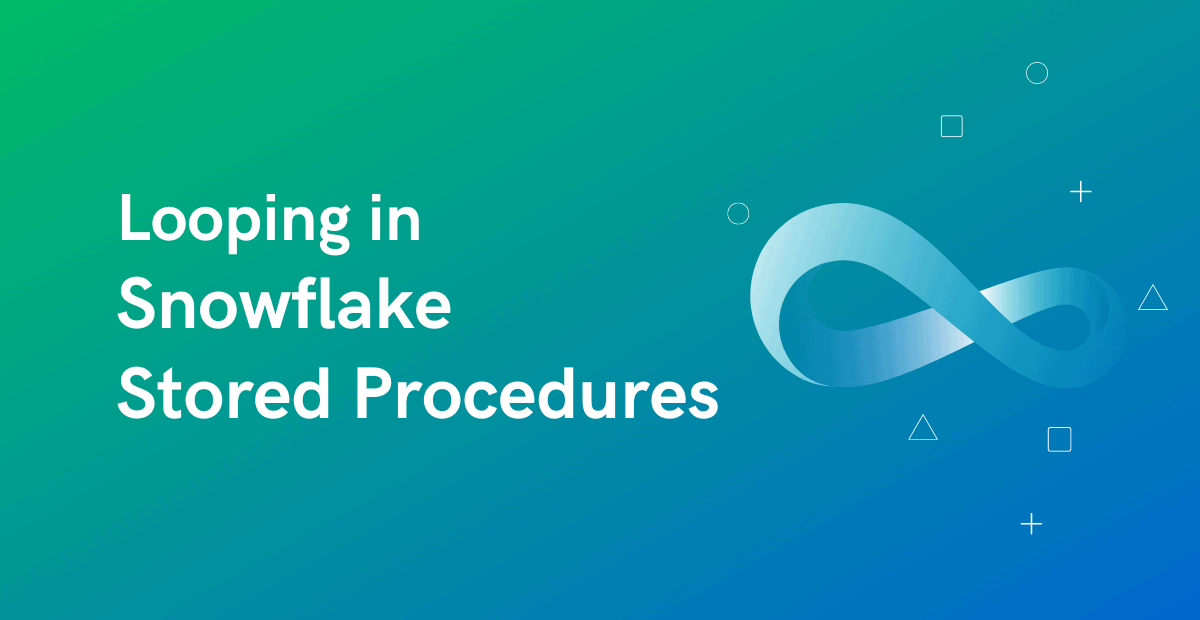1. Introduction
Snowflake allows storing the entire rows present in the result set of a SELECT statement and return them as output in the form a table using RESULTSET. RESULTSET is a SQL data type supported only in Snowflake Stored Procedures that points to the result set of a query.
The results that RESULTSET points to can be accessed using one of the following ways.
- Return the results as a table using the TABLE() syntax.
- Assigning the RESULTSET to a CURSOR and looping over it.
2. Syntax of RESULTSET in Snowflake Stored Procedures
The syntax of RESULTSET includes two different parts
- Declaring a RESULTSET and assigning a SQL statement.
- Accessing data from a RESULTSET
- Returning the data of a RESULTSET as a table.
- Accessing data from a RESULTSET using a Cursor
2.1. Declaring a RESULTSET
The RESULTSET can be declared either in the DECLARE or BEGIN…END section of the stored procedures.
The below is the syntax to declare a RESULTSET in the DECLARE section of the stored procedure.
DECLARE
<resultset_name> RESULTSET DEFAULT ( <query> );The below is the syntax to declare a RESULTSET in the BEGIN…END section of the stored procedure.
BEGIN
LET <resultset_name> := ( <query> );
(or)
LET <resultset_name> RESULTSET := ( <query> );
END;2.2. Returning the data of a RESULTSET as a Table
In order to return the results of a RESULTSET as an output, pass the RESULTSET to TABLE(). In the CREATE PROCEDURE, the return type should be declared as a TABLE along with the columns and their data types.
The below is the syntax to return a RESULTSET as a Table in a stored procedure.
CREATE PROCEDURE sp_demo()
RETURNS TABLE( column_1 <data_type>, column_2 <data_type>,…)
…
BEGIN
…
RETURN TABLE(<resultset_name>);
END;2.3. Accessing data from a RESULTSET using a Cursor
Instead of assigning the SELECT query directly to the CURSOR, you can assign a variable of type RESULTSET which holds the query.
The below is the syntax to access data from a RESULTSET using a CURSOR.
BEGIN
LET <resultset_name> RESULTSET := ( <query> );
LET <cursor_name> CURSOR FOR <resultset_name>;
…
END;To learn more about using RESULTSET with CURSORS, refer our previous article on cursors.
3. Return output of a SELECT statement in Stored Procedures using RESULTSET
In order to return the output of a SELECT statement in stored procedures, we can assign the SQL statement to a variable of type RESULTSET and return the data from RESULTSET as a table.
Let us understand how to implement RESULTSETs in stored procedures using examples. Consider below EMPLOYEES data as an example for demonstration purpose.
CREATE OR REPLACE TABLE EMPLOYEES(
ID NUMBER,
EMP_NAME VARCHAR(50)
);
INSERT INTO EMPLOYEES VALUES (101, 'TONY'), (102, 'STEVE');3.1. Declaring RESULTSET with a DEFAULT Clause
A RESULTSET can be declared in DECLARE section of the stored procedure and assigned with a DEFAULT SELECT query while declaration as shown below.
CREATE OR REPLACE PROCEDURE sp_demo_resultset()
RETURNS TABLE(ID NUMBER, ENAME VARCHAR)
LANGUAGE SQL
AS
$$
DECLARE
res RESULTSET DEFAULT (SELECT ID, EMP_NAME FROM EMPLOYEES);
BEGIN
RETURN TABLE(res);
END;
$$
;The output of the stored procedure is as follows.
CALL sp_demo_resultset();| ID | ENAME |
| 101 | TONY |
| 102 | STEVE |
3.2. Declaring RESULTSET without a DEFAULT Clause
Instead of assigning the SELECT query while declaring using DEFAULT clause, the query can be assigned after declaration in BEGIN…END section of the procedure as below.
CREATE OR REPLACE PROCEDURE sp_demo_resultset2()
RETURNS TABLE(ID NUMBER, ENAME VARCHAR)
LANGUAGE SQL
AS
$$
DECLARE
res RESULTSET;
BEGIN
res := (SELECT ID, EMP_NAME FROM EMPLOYEES);
RETURN TABLE(res);
END;
$$
;The output of the stored procedure is as follows.
CALL sp_demo_resultset2();| ID | ENAME |
| 101 | TONY |
| 102 | STEVE |
3.3. Constructing the SQL statement dynamically for RESULTSET
A SQL statement can also be constructed dynamically as a string expression. But it cannot be directly assigned to a variable of type RESULTSET as shown in previous examples.
The SQL expression should be executed using EXECUTE IMMEDIATE before assigning it to a RESULTSET.
CREATE OR REPLACE PROCEDURE sp_demo_resultset_dynamic_query(var_id number)
RETURNS TABLE(ID NUMBER, ENAME VARCHAR)
LANGUAGE SQL
AS
$$
DECLARE
res RESULTSET;
sql_query VARCHAR;
BEGIN
sql_query := 'SELECT ID, EMP_NAME FROM EMPLOYEES WHERE ID ='|| var_id;
res := (EXECUTE IMMEDIATE :sql_query);
RETURN TABLE(res);
END;
$$
;The output of the stored procedure is as follows.
CALL sp_demo_resultset_dynamic_query(101);| ID | ENAME |
| 101 | TONY |
4. Difference between a RESULTSET and CURSOR in Snowflake Stored Procedures
Though both RESULTSET and CURSOR provide access to the result set of a query, they differ in following ways.
1. The main difference between a RESULTSET and CURSOR in Snowflake Stored Procedures is that the Cursors allow you to loop through each row of the query result set and apply certain actions on each row. Whereas it is not supported with the RESULTSET.
In order to loop through each row of the result set of a query that RESULTSET points to, it again needs to be assigned to a Cursor.
2. The query assigned to the RESULTSET is executed when the query is assigned to it either in DECLARE or BEGIN…END section of the procedure.
For Cursors, the query is not executed during assignment. The query is executed when you open the cursor using OPEN command.
3. Binding variables to the query assigned is supported in Cursors whereas it is not supported in RESULTSET
5. Conclusion
Snowflake supports RESULTSET only inside Stored Procedures with SQL Scripting.
Snowflake do not support
- Declaring an input parameter of type RESULTSET.
- Declaring a stored procedure’s return type as RESULTSET.
- Declaring column of type of RESULTSET.
- Querying RESULTSET as a table using SELECT.
Checkout other articles related to Snowflake Stored Procedures
Subscribe to our Newsletter !!
Related Articles:

IF ELSE, CASE statements in Snowflake Stored Procedures provides a way to execute a set of statements if a condition is met.

Loops in Snowflake Stored Procedures enables you to execute a set of statements until a particular condition is satisfied.

Cursors allows you to loop through a set of rows of a query result set and perform same set of defined actions for each row individually.




